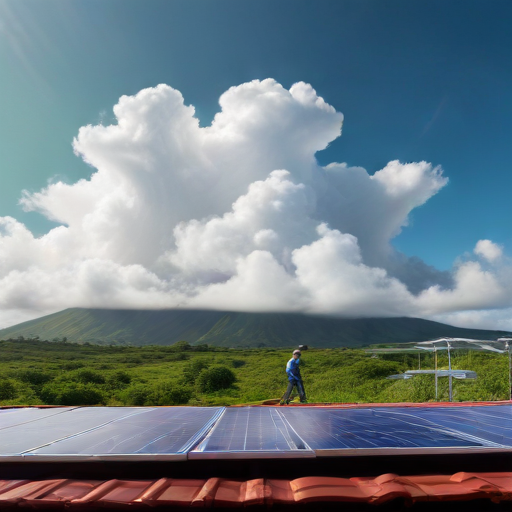A serene view of Salinas, Puerto Rico, highlights the island’s natural beauty amid ongoing discussions about energy sustainability. Following the devastation of Hurricane Maria in 2017, which left the majority of Puerto Rico’s 3.4 million residents without power, the push for a resilient and sustainable energy system has gained momentum. However, the introduction of a proposed utility-scale solar project has raised some eyebrows.
Ruth Santiago, an environmental attorney and member of the White House Environmental Justice Advisory Council, spoke with Host Paloma Beltran about the implications of transitioning to solar energy in Puerto Rico.
The aftermath of Hurricane Maria saw thousands suffering from the loss of electricity. This tragedy has motivated a commitment to renewable energy for the island, with a goal of achieving 100% sustainability by 2050. In this spirit, the Department of Energy has allocated an $860 million loan for two largescale solar projects projected to generate enough capacity to power 43,000 homes annually, marking “Project Marahu” as the biggest solar and battery storage operation in Puerto Rico. However, concerns persist regarding the management of existing operations by AES Corporation, the company behind the initiative, which has faced scrutiny for its handling of a local coal plant.
Santiago highlighted the ecological richness of Salinas and Guayama, areas earmarked for the solar project. This region is not only agriculturally vital but also hosts protected species, raising questions about potential ecological disruption.
Studies surrounding the AES project caution against its impacts on vulnerable communities, where many residents are already facing socioeconomic challenges. Santiago advocates for utilizing existing infrastructures, such as rooftops and parking lots, for solar installations, arguing that these decentralized approaches can mitigate the environmental footprint and enhance community resilience compared to large utility-scale projects.
In discussing the future of Puerto Rico’s energy transition, Santiago emphasized the need for equitable systems that empower locals to generate renewable energy, considering the historical inequities in energy access.
While Luma Energy, the island’s primary energy distributor, has managed distribution, Santiago noted the economic burden placed on residents looking to adopt rooftop solar solutions. The necessity for a more supportive government and energy company initiatives was articulated, particularly in light of significant federal disaster recovery funds.
In conclusion, as Puerto Rico strives for a sustainable energy future, the balance between large-scale projects and community-focused solutions will be critical. The insights shared by experts like Ruth Santiago highlight the importance of incorporating environmental, social, and economic factors into energy planning. With the right investments and policy frameworks, there’s hope for a more resilient and just energy landscape in Puerto Rico.
This transition to renewable energy presents an opportunity for Puerto Rico not just to recover from past disasters but to emerge stronger and more self-sufficient, with communities empowered to actively participate in their energy future. The discussion continues, advocating for voices that prioritize both environmental integrity and social equity.
